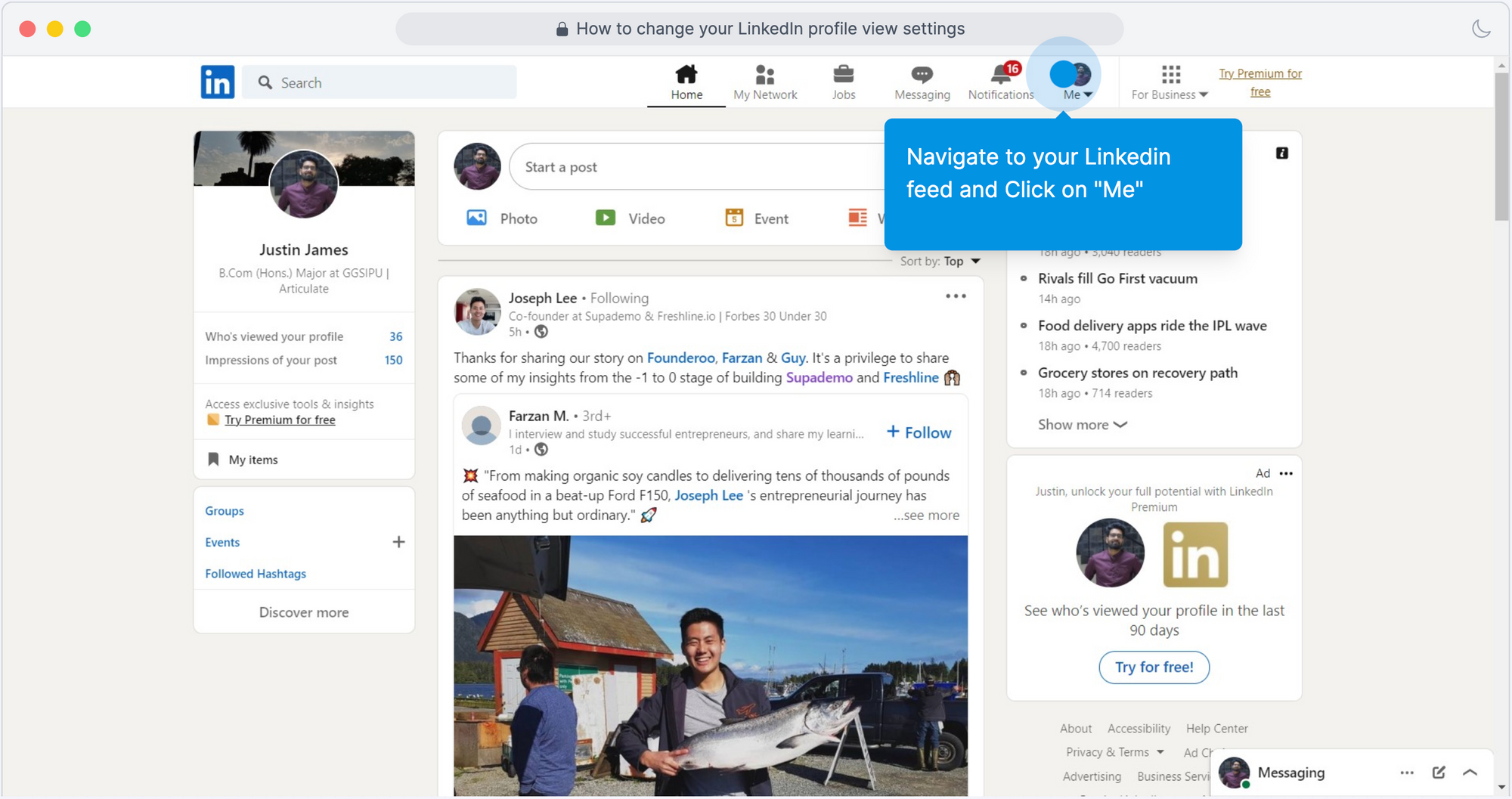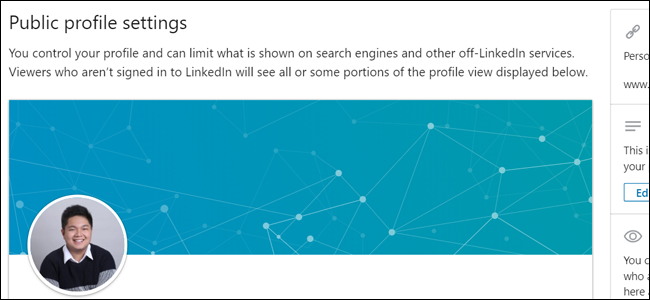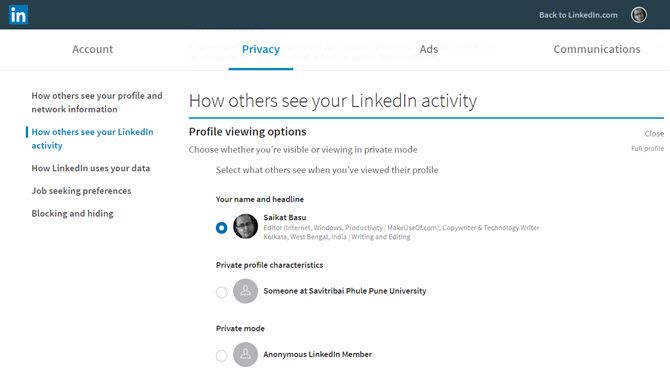Welcome to the world of LinkedIn! If you're looking to enhance your professional networking game, understanding LinkedIn's following features is crucial. Following users on
What Does It Mean to Follow Someone on LinkedIn?

Following someone on LinkedIn is a way to show interest in their professional journey without the formalities of a connection request. Here are a few key points to help you understand this feature better:
- Stay Informed: When you follow someone, you automatically receive updates about their activities, such as new posts, comments, and articles they've shared. This can help you stay informed about trends and topics that interest you.
- Network Expansion: Following users expands your network in a more casual manner. It allows you to connect with industry experts and thought leaders without immediately establishing a direct relationship.
- Visibility: Your connections can see who you follow, which can influence their perception of your interests and professional alignment. This can be beneficial when aiming to build a personal brand aligned with influential figures in your field.
- Engagement Opportunities: By following users and engaging with their content through likes, comments, or shares, you not only increase your visibility but also open the door to potential conversations and collaborations.
By following someone, you're essentially subscribing to their professional insights and updates. This means you can keep track of what's happening in your industry without directly engaging in a conversation. It's a low-pressure way to learn more and gain visibility in your field. Think of it as a way to curate your own professional content feed.
Additionally, it’s important to note that following someone does not mean they are following you back. This one-sided relationship is quite common on LinkedIn. However, it can often lead to connections down the line, especially if you frequently interact with their content.
In summary, following someone on LinkedIn is a strategic move to enhance your professional knowledge and network. It's a simple feature that can significantly impact your career if used wisely. Next, we'll explore more about the advantages of following users and how to leverage this feature effectively.
Also Read This: How to Sign Out from LinkedIn: Logging Out of Your LinkedIn Account for Security
3. Differences Between Connecting and Following on LinkedIn

When navigating LinkedIn, it’s vital to understand the distinction between connecting and following users. While both options help you engage with others in your professional network, they serve different purposes and functionalities. Let’s break them down:
- Connecting: When you connect with someone on LinkedIn, you’re essentially establishing a two-way relationship. Both parties can see each other's profiles, share messages, and interact more freely. This is similar to being "friends" on social media platforms, where both users approve of the connection and have the ability to view each other’s network and activities.
- Following: Following someone, on the other hand, allows you to keep up with their updates without a reciprocal connection. When you follow someone, you can see their public posts and articles in your feed, but they’re not able to see your profile or engage with you directly unless you connect. This is more akin to "subscribing" to someone’s content, allowing you to stay informed without requiring a mutual connection.
Here’s a quick comparison:
| Feature | Connecting | Following |
|---|---|---|
| Mutual Relationship | Yes | No |
| Ability to Send Messages | Yes | No |
| View Profile Information | Yes | Limited |
| Engaging with Content | Yes | Through Comments/Interactions |
Understanding these differences can significantly impact how you manage your professional relationships on LinkedIn. If you’re looking to expand your network with industry peers, connecting might be the way to go. But if you’re interested in following thought leaders or companies without the commitment of a full connection, then following is the perfect solution.
Also Read This: Do People Still Use LinkedIn? Trends in Professional Networking
4. Common Reasons for Limited Following Options

Now that you’ve grasped the differences between connecting and following on LinkedIn, let’s discuss some common reasons why you might encounter limited following options. It can be frustrating when you want to follow someone but find that you can’t. Here are a few reasons this might happen:
- Privacy Settings: Many LinkedIn users adjust their privacy settings, which can limit who can follow them. If someone has their settings configured to allow connections only, you might not have the option to follow them unless you send a connection request.
- Network Limitations: LinkedIn has specific rules concerning users who can follow each other based on their network. For example, if you share no mutual connections or if the person is not in your industry, they may restrict follow options.
- Account Type: LinkedIn offers various account types, including Basic, Premium, and Sales Navigator. Some features, such as following certain users, may differ based on the kind of account someone holds. Premium account holders, for instance, might have more flexibility in their follow settings.
- Reputation and Activity: Users with significant influence or presence on the platform may set stricter controls to manage who can follow them. If they perceive potential followers as unrelated to their field, they may limit their followability.
Being aware of these factors can help you navigate LinkedIn more effectively. If you’re encountering limitations, consider reaching out to users for a connection request, or simply adjust your strategy to follow others who are more accessible. Understanding these nuances not only enhances your experience but also transports you closer to achieving your professional networking goals.
Also Read This: What Does '2nd' Mean on LinkedIn? A Quick Guide to Connection Types
5. How to Adjust Your LinkedIn Profile Settings
Updating and adjusting your LinkedIn profile settings can feel a bit daunting, especially with all the options available. But don’t worry; once you get the hang of it, it’s quite straightforward! Let’s break down the steps to make your profile settings work for you.
First things first, to access your settings, you’ll need to log in to your LinkedIn account. Once you’re in, look for your profile picture in the upper right corner of the screen. Click on it, and a drop-down menu will appear. Select “Settings & Privacy” from this list. Easy, right?
Here’s where the magic happens! You’ll see various tabs at the top, including:
- Account Preferences: This section allows you to adjust your profile visibility and manage notifications. For example, you can decide who can see your profile when you’re browsing others or if you want to receive notifications about job openings tailored to your skills.
- Privacy Settings: Here, you can control who can see your activity, who can send you connection requests, and even the visibility of your recent profile updates.
- Communications: In this tab, you get to decide how LinkedIn communicates with you, whether it’s via email, mobile notifications, or messaging.
When it comes to following others, you’ll want to dive into your Privacy Settings. There, you can manage who can follow you and whether your followers can see your connections. This is especially important if you’re looking to build a personal brand or keep your professional contacts private.
Next, consider adjusting your public profile settings. This setting allows you to control how your profile appears to non-LinkedIn users and can be crucial if you’re job hunting or want to build your online presence. You can choose to display your profile photo, current position, and even recommendations you’ve received. Make sure to check this regularly to keep it updated.
Lastly, take a moment to review your account security settings. Activate two-step verification to protect your account from unwanted access. This is a simple but effective way to ensure that your profile remains secure.
Remember, regularly revisiting your LinkedIn profile settings can help you maintain control over your online presence and make it easier to connect with the right people. So, take a few minutes today to navigate through these settings – you’ll feel much more in control!
Also Read This: How to Add Experience on LinkedIn? Adding New Job Roles and Career Milestones to LinkedIn
6. Benefits of Following Over Connecting on LinkedIn
Now that we’ve covered how to adjust your profile settings, let’s talk about an essential aspect of LinkedIn: following users versus connecting with them. Both options have their advantages, but following often comes with unique benefits that can enhance your LinkedIn experience. Here’s a closer look!
1. Broader Reach Without Pressure: Following someone on LinkedIn allows you to keep up with their posts and updates without the pressure of having a direct connection. This is especially useful for industry leaders or influencers whom you admire but may not have a personal relationship with.
2. Meaningful Engagement: By following, you can engage with their content through likes, comments, and shares without feeling the need to maintain a direct conversation. This can lead to more authentic interactions and can showcase your interest in their insights.
3. Privacy Control: When you follow someone, they don’t receive a notification unless they have their settings configured for followers. This level of privacy can be helpful if you're interested in someone’s expertise but not ready to reach out personally.
4. Trend Insights: Following allows you to stay ahead of industry trends. By keeping an eye on thought leaders, you can access valuable information, articles, and discussions that can inform your professional growth.
5. No Limits: LinkedIn imposes a cap on the number of connections you can make (30,000). However, you can follow an unlimited number of users. This means you can curate your feed and stay informed about a diverse range of topics and opinions.
6. Casual Networking: Following is akin to being a part of the conversation without the formality of adding someone to your network. This is particularly beneficial for those just starting their careers or exploring new fields.
In summary, while connecting emphasizes personal relationships, following offers a less formal way to engage with and learn from others. Whether you’re aiming to grow your professional network or keep up with industry leaders, consider using the follow feature effectively to enhance your LinkedIn experience!
Also Read This: Linking Your LinkedIn Profile to Your Resume
Troubleshooting Issues with Following Users
Having trouble following users on LinkedIn? You’re not alone! Many users encounter occasional hiccups when trying to connect with other professionals on the platform. Let’s look at some common issues and how you can resolve them quickly.
1. Profile Privacy Settings: One reason you may not be able to follow users is if your privacy settings are too restrictive. If you want to follow someone, ensure that your settings allow others to see your profile. Navigate to your privacy settings and make sure your profile visibility is set to "Public" or at least "Connections Only."
2. Account Limitations: LinkedIn has certain limits in place. If you’ve reached your following limit (which is currently set at 30,000 connections and followers), you’ll need to unfollow others before you can add new ones. Check the number of people you are currently following and trim your list if necessary.
3. Blocking and Reporting: If you’ve previously blocked a user, you won’t be able to follow them again unless you unblock them first. Similarly, if a user has blocked you, there’s no way to follow them. If you suspect this to be the case, you can check your blocked list in the settings.
4. Technical Issues: Sometimes, the problem is due to technical glitches. If LinkedIn isn't functioning properly, try refreshing the page, clearing your browser cache, or even using a different browser. You can also check LinkedIn’s help page to see if there are any ongoing outages or maintenance.
5. Browser Extensions: Occasionally, browser extensions can interfere with LinkedIn’s functionality. Consider disabling any extensions and see if that resolves the issue. If you find that one specific extension is causing the problem, you might want to look for alternatives that are compatible with LinkedIn.
6. Application Restrictions: If you’re using the LinkedIn mobile app and having trouble, ensure it’s updated to the latest version. An outdated app can lead to performance issues. If issues persist, try logging out and back in, or reinstalling the app altogether.
Should you continue to experience difficulties, don’t hesitate to reach out to LinkedIn support. They can provide specific assistance tailored to your situation. By addressing these common issues, you’ll be able to engage with others more effectively on LinkedIn!
Conclusion and Best Practices for LinkedIn Engagement
Understanding LinkedIn's profile settings for following users is essential for maximizing your networking potential on this professional platform. Following others is not just about expanding your connections; it's a two-way street of engagement, learning, and sharing. Here’s a quick recap and some best practices to enhance your LinkedIn experience.
1. Optimize Your Profile: Before diving deep into following others, make sure your own profile is polished. A complete profile with a professional photo, compelling headline, and clear summary can attract more followers to you, making your network-building efforts easier and more rewarding.
2. Choose Quality Over Quantity: While it might be tempting to follow as many people as possible, focus on connecting with those whose content resonates with you or aligns with your professional interests. This strategic approach enhances the quality of your feed and allows you to engage meaningfully.
3. Engage Regularly: Just following users is not enough. Engage with their content by liking, commenting, and sharing. This interaction helps you stay visible and can lead to reciprocal engagement, making your network more active and beneficial.
4. Create Valuable Content: If you want others to follow you, contribute valuable insights, articles, or updates related to your field. This will not only position you as a thought leader but also encourage others to follow you for more enriching content.
5. Monitor Your Network: Regularly assess the people you’re following and adjust as necessary. If someone’s content no longer aligns with your interests, feel free to unfollow them. Your LinkedIn feed should be a source of inspiration and information, not clutter.
6. Stay Informed: Keep an eye on LinkedIn’s updates and changes to their algorithm, as these can influence how engagement works on the platform. Being informed about these changes can help you adjust your strategies accordingly.
By applying these best practices and troubleshooting potential issues proactively, you can elevate your LinkedIn game significantly. Happy networking!
 admin
admin








